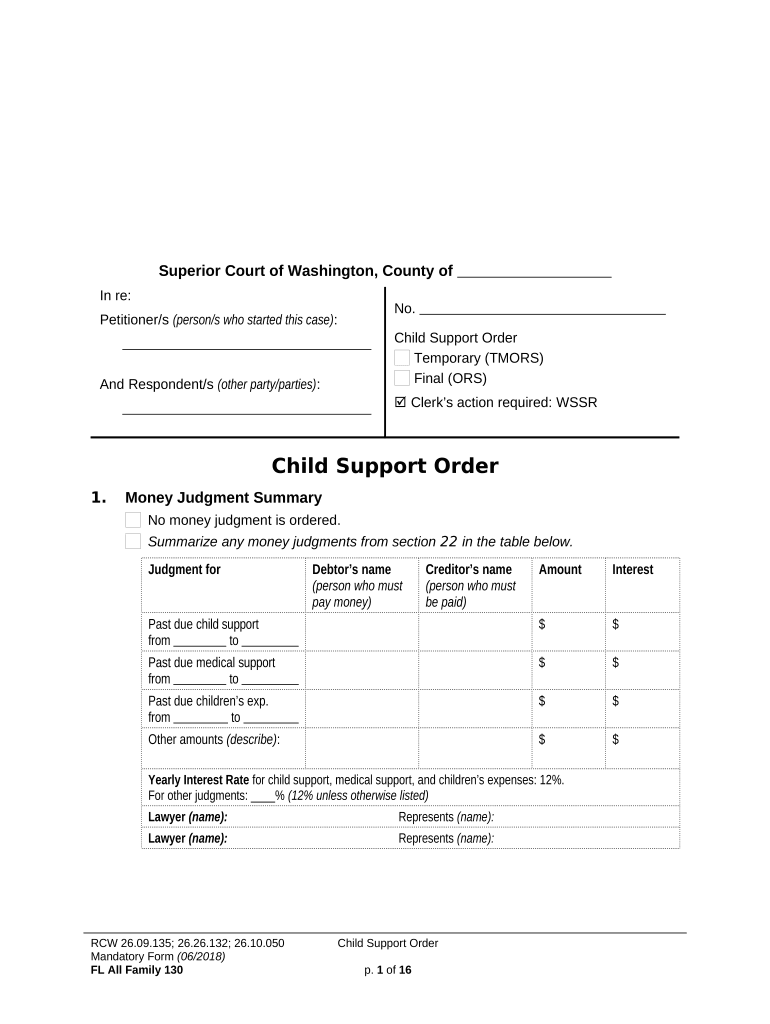5 Steps to Secure Child Support Paperwork Easily

When navigating through the intricacies of family law, one of the most critical aspects for separated or divorced parents is ensuring that child support is managed fairly and effectively. Securing child support paperwork is not just a legal obligation but a commitment to the child's welfare. Here, we delve into the five essential steps to make this process as smooth and hassle-free as possible.
Understanding the Basics of Child Support

Before diving into the procedural steps, it’s beneficial to understand what child support entails. Child support is a legal mechanism designed to ensure that the financial responsibilities of raising a child are shared between both parents. Here are some key points:
- Obligations: Both parents have an obligation to support their children financially until they reach the age of majority or complete their education.
- Legal Framework: Child support orders are governed by state laws, which often take into account factors like income, custody arrangements, and the number of children involved.
Step 1: Gather Necessary Documents

The first step in securing child support paperwork involves compiling all the required documents. Here’s a list of what you’ll need:
- Birth Certificate of the Child: This is crucial for establishing the parent-child relationship.
- Proof of Income: Pay stubs, W-2 forms, or tax returns for both parents.
- Custody Agreements: Any existing custody orders or agreements.
- Expense Details: Records or estimates of child-related expenses like medical, education, and daycare costs.
🚨 Note: Ensure all documents are current and properly notarized where necessary.

Step 2: Establishing Paternity or Parentage

Establishing who the legal parents are is a prerequisite for child support proceedings:
- Birth: If parents are married when the child is born, parentage is assumed.
- Acknowledgment of Paternity: If not married, both parents can sign this voluntary agreement.
- DNA Testing: Court can order DNA testing if parentage is contested.
Step 3: Completing Legal Forms

Child support paperwork requires the completion of several legal forms:
- Petition for Child Support: This form initiates the legal process of child support.
- Financial Affidavit: A sworn statement detailing your income, assets, and expenses.
- Child Support Worksheet: Helps calculate the amount of support based on income and expenses.
| Form | Purpose | Typical Content |
|---|---|---|
| Petition | Initiate Child Support | Details of both parents, child, and custody arrangement |
| Financial Affidavit | Income and Expenses | Income sources, deductions, monthly expenses |
| Worksheet | Calculate Support | Formulas, adjustments, and final child support amount |

Step 4: Filing with the Court

After completing the forms, they must be filed with the appropriate court:
- Where to File: Typically, family law or child support enforcement courts.
- Filing Fees: There might be costs associated with filing, although waivers are available for low-income individuals.
- Service of Process: The other parent must be officially served with the documents to ensure due process.
Step 5: Attending Hearings and Receiving Orders

The final step involves attending hearings and receiving child support orders:
- Pre-Trial Hearing: Addressing initial issues like mediation or temporary support.
- Final Hearing: Where the judge issues the official child support order.
- Modification Requests: If there are significant changes in circumstances, the order can be modified.
📢 Note: Prepare for potential outcomes, including the possibility of negotiation or court mandates.
By following these five steps diligently, you ensure that the process of securing child support paperwork is handled with care and precision. Remember, child support is not about the parents' financial agreements but about providing for the child's future. Ensuring all documentation is in order, understanding legal obligations, and being prepared for court proceedings helps in creating a stable financial environment for your child. Whether you're the custodial or non-custodial parent, these steps are crucial for securing your child's well-being.
Can I request child support without going to court?

+
Yes, many states offer administrative processes for establishing child support without needing to go to court. You can often work through child support enforcement agencies to calculate and set up child support obligations.
What if the other parent refuses to pay child support?

+
If the other parent refuses to pay, you can enforce the child support order through several methods, including wage garnishment, intercepting tax refunds, and even jail time for contempt of court.
How long does it take to get child support paperwork processed?

+
The duration can vary significantly, often taking anywhere from a few weeks to several months, depending on the complexity of the case, court schedules, and whether both parties agree or contest the terms.